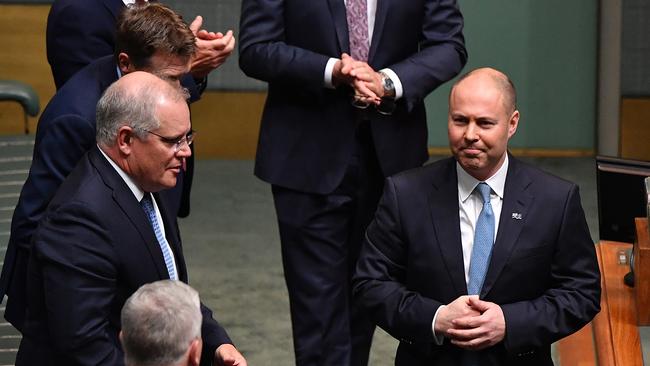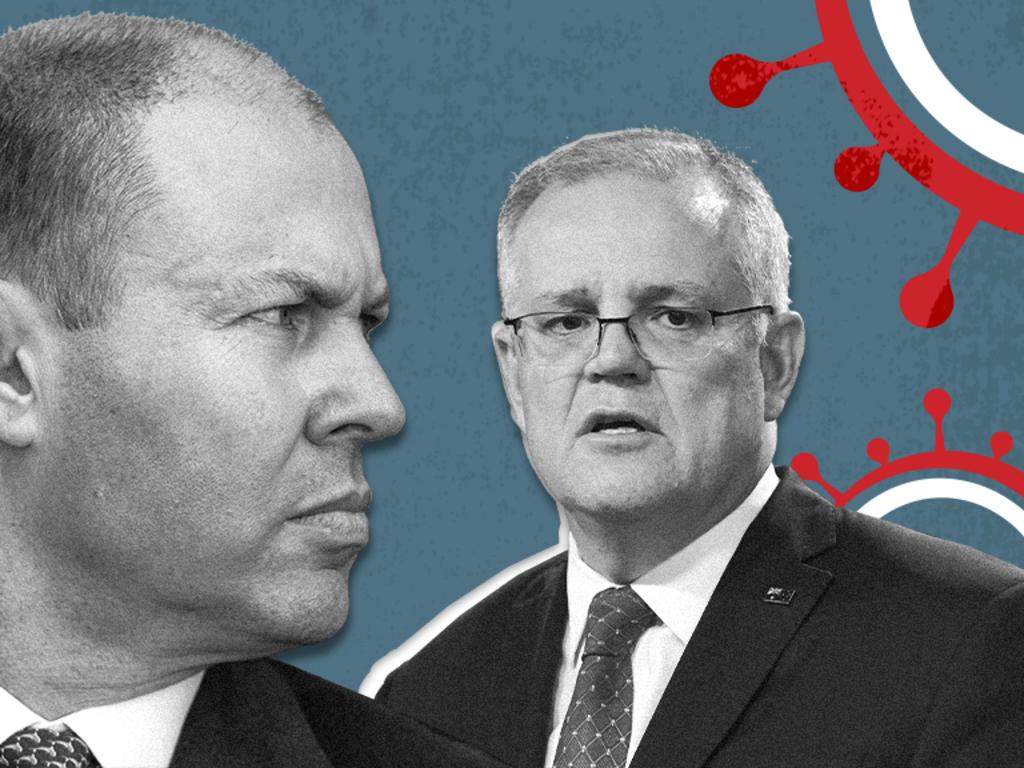Budget 2020: Look, this is not pretty, but could have been worse
Once we get rid of restrictions, growth and confidence should bounce back fast.

There was certainly no slashing of spending – which this year alone will soar to $677bn, over 30 per cent higher than had been forecast late last year.
And the collapse in tax receipts, down to $464bn or around 10 per cent below what was forecast before the pandemic, was a result of slumping economic activity rather than any tax-cutting zeal.
Indeed, the $1.3bn that will be put toward “six manufacturing priorities” suggest Robert Muldoon, the big spending, interventionist New Zealand leader from the 1980s, was a greater inspiration than either of his UK and US contemporaries.

Federal government debt will blast through $1.1 trillion by 2024, after a cumulate string of four budget deficits in excess of $480bn – quite a turnaround from a $6.1bn surplus planned for this financial year.
The epidemiologists won the prize for worst forecasting this year, economists must have won it last year.
The federal budget, arguably the Coalition’s most important since 2013, was nevertheless pragmatic, with few surprises. It’s philosophy reflected the Zeitgeist of a world with ultra-low interest rates: spend and borrow to manage demand. Shorn of the political requirement to produce a budget surplus, and blessed with ultra-low borrowing costs, the Coalition could have spent a lot more, and indulged in more wasteful consumption and vote buying.
It deserves credit for not doing so. After a few years the various Jobseekers, Trainers, Keepers and Maker schemes, will fall away.
The only legacy will be debt, rather than permanent distortion of the economy.
Even if critics might quibble about their proportionality, the government’s measures have been temporary, and increasingly targeted too, as the Treasurer has said all year they would be.
To be sure, further $250 cash handouts to pensioners are politically motivated and wasteful; anyone on a guaranteed nominal income is the least in need of help.
And those billions to subsidise new courses and training in many cases will be more useful at stopping students from being counted as unemployed than imparting anything relevant.
But at least there was no baby bonus, no supercharged first homeowners grant.
The bulk of the announcements, most of which had been leaked in the days leading up to the budget, are designed to make it more likely private businesses will hire workers and invest.
Business investment, especially outside the mining sector, has been the weakest part of the economy, on track to plunge over 14 per cent this financial year having fallen last year as well.
On the hiring front, the government hopes a new wages subsidy will see around 450,000 under 35s get back into the workforce. It will be paid at the rate of $200 per week for those aged under 30, and $100 per week for those aged between 30-35.
On the investment front, over 99 per cent of businesses with turnovers up to $5bn will be able to write off the full value of any eligible asset they purchase for their business.
And they will also be able to carry back losses to previous years to reduce the tax bills, and therefore assist their cash flow.
The government hasn’t used the sense of crisis as a launch pad for reform, as some hoped, but based on the Coalition’s record that was hardly a surprise.
Bringing forward of some income tax cuts scheduled for 2022 – increasing two of the tax thresholds - to this year is welcome boost in disposable income but doesn’t qualify as reform. Stage 3, which entails lowers marginal rates and abolishing one of the tax brackets entirely, still won’t occur until 2024.
“The Government’s economic support is expected to result in economic activity being 4.5 per cent higher by 2021-22 and the peak of the unemployment rate being lower by around 5 percentage points than what otherwise would have occurred,” the budget asserted confidently. Perhaps.
The budget confirms the renaissance of Keynesian economics. All the lessons learned in the stagflation of the 1970s and 1980s have been discarded. Governments are once again confident they can manage economies.
In the early 1990s recession the structural budget deficit never exceeded 4 per cent of GDP. This year’s deficit of $213bn is the equivalent of 11 per cent of GDP (in the US it’s nearer to 17 per cent).
It’s certainly a lot cheaper than it was. Remarkably, the annual interest cost of federal government debt is expected to remain stable at around $13bn a year even as net debt rises to $966bn, as lower interest rates outweigh the surge in borrowing.
Awareness of modern monetary theory, which recommends central banks create money to fund budget deficits, has provided some intellectual cover, however misguided ultimately, for a more activist government.
“It doesn’t seem likely any significant economies will shift entirely to an MMT style framework but heightened awareness of MMT does seem to be contributing to a more permissive fiscal environment,” said Richard Yetsenga, ANZ chief economist. After the 1990s recession, it took around 2 years for GDP to return to previous levels. It took 10 years before the unemployment rate fell back below 6 per cent.
There’s a good reason it will be quicker this time.
Sure, the recession looks shocking in figures: the collapse in GDP dwarfs anything the economy has seen before over the same period of time.
But unlike previous recessions, this one, in large part at least, has been caused by government restrictions.
It’s been self-imposed, rather than a result of the business cycle.
That means growth should bounce back more quickly when restrictions are lifted and confidence returns.
The government allocated $1.7 billion in the budget for almost 85 million doses of potential vaccine.
A big problem is the government has linked the return of confidence to the success of these vaccines.








Anyone worried the budget would be guided by the fiscal principles of Ronald Reagan and Margaret Thatcher, as Treasurer Josh Frydenberg hinted earlier in the year, could rest easy last night.